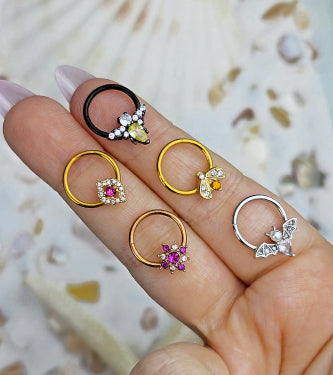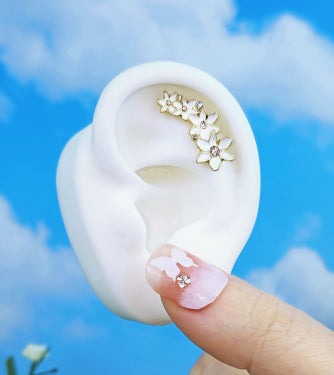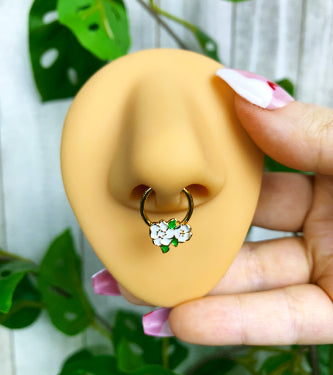The stretching or “gauging” of piercings, particularly in the ears, has become increasingly popular in recent years. Other piercings as well, in harder to stretch places, are being experimented with and gauged to new, even larger sizes than ever before. So how do you stretch a piercing to an incredibly large size, and how big is too big if you’re not sure you want it be larger forever?
Well, there are several methods for stretching different piercings, including (amongst the most popular) piercings of the septum, tongue, lip or labret, and ears. The most commonly used methods are tape stretching, tapering, dead stretching, and scalpelling, all of which present their own risks and rewards, depending on the piercing being enlarged.
Tape stretching is considered to be the most safe by many piercers, because the sizing will increase very gradually, and if performed correctly, the process will allow the flesh around the piercing to adjust to new slightly larger stretched sizes more comfortably. The basic premise of this method is to wrap the shaft of your existing size jewelry with tape, like non-adhesive teflon tape, and then reinsert it so that the diameter is slightly larger than before. Each new layer of tape makes the jewelry’s diameter grow very slightly in size, and as the piercing adjusts to the new size, eventually a larger size of jewelry will be able to be inserted, and the process can be repeated. In this way gauging up is very gradual and takes a longer period of time, but there’s very minimal risk to the skin, and as long as the piercing isn’t stretched very large, there is the potential for rebound to smaller sizes if you decide you’ve accidentally gone larger than you wanted.
Another way to stretch that’s popular is tapering. When tapering a piercing there will be not one, but two new pieces of jewelry involved: the taper, and the new larger sized item. This type of stretching consists of a taper of the larger size being inserted through the piercing skinny end first, and then pushed through to the larger end. The larger end of the taper itself will have the same diameter measurement as the new jewelry you want to wear. The new jewelry will be placed against the back of the taper’s large flat end (some of them will screw in, others won’t) and when the taper has been forced through the new jewelry will follow into the piercing and remain there, allowing the piercing to adjust to the new larger size before repeating. This method of gauging up is thought to be more effective for piercings that are harder to stretch out, like the septum piercing, but should be done by a professional in a piercing shop to avoid unnecessary risk of skin damage.
Though popular amongst some who want quick stretching results, dead stretching is not a recommended method of sizing up a piercing. The dead stretch is essentially when a new, larger gauge of jewelry is forced through the piercing without the help of tapers or tools, and without gradual stretching of the skin to insure adjustment. This type of gauging is very risky and may cause tearing of the piercing, scarring, and several other skin deformities, most of which are permanently disfiguring. Always ask a piercer before stretching any piercing, especially if you’re considering dead stretching.
The last common method of gauging up, known as scalpelling, involves not actually stretching a healed piercing, but removing some of the tissue around the piercing ( called the fistula) altogether surgically to expand it to a larger size. Though slightly more painful and invasive, the scalpel technique is still fairly common amongst piercings that are generally able to be gauged very large, like the ears. If scalpelling is used even once as a gauging technique, it is very hard to get a piercing of any size to reshrink because of how the tissue has healed.
Once any piercing is stretched, using any method, there will always be a period of healing and adjustment. And with a new, larger gauge piercing, will come fun and interesting styles of new larger gauge jewelry.



